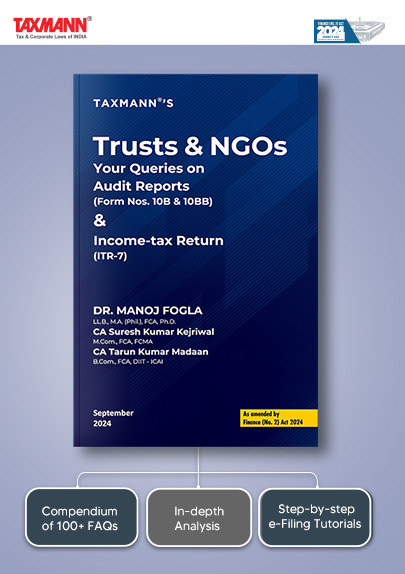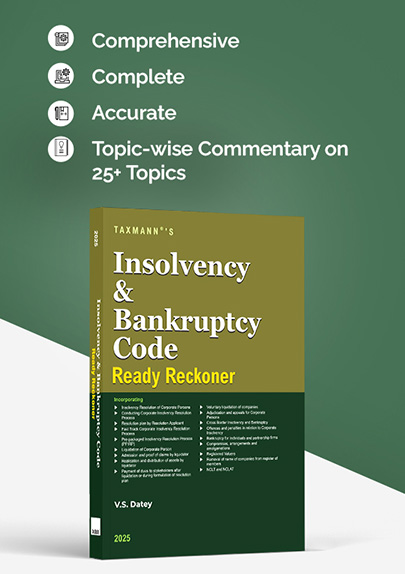[Opinion] Rethinking Gift Taxation in India | The Need for Clarity and Reform in Trust and Inheritance Structures
- News|Blog|Income Tax|
- 3 Min Read
- By Taxmann
- |
- Last Updated on 22 January, 2025
Ankit Namdeo & Parv Jain – [2025] 170 taxmann.com 457 (Article)
1. Introduction
India does not have any specific legislation for gift and inheritance related provisions. The provisions relating to taxation of gift are contained in the anti-abuse provisions of the Income-tax Act, 1961 (“IT Act”). These provisions have always been a focal point of discussion within the Indian tax regime. The taxation of deemed income arising from transfers of assets that are made below the fair market value has been very crucial anti-abuse provisions introduced to protect revenue/ tax base. This seems reasonable, considering the significant revenue loss if the gift tax provisions could be easily circumvented. In the recent case of Buckeye Trust, the Bangalore tribunal (“ITAT”) took a very wide interpretation of provisions of the income tax law to tax the trust, showcasing the existing ambiguity and lack of framework within the gift tax provisions. Although the order has been recalled by the ITAT due to inadvertent errors, this highlights the need for a re-examination of existing provisions related to gift tax, to eliminate any uncertainty and vagueness surrounding trusts and inheritance.
We start this article by explaining the background of the Indian gift taxation system. Further, we delve into factual background of the Buckeye Trust rulingand deep dive into the interpretations and reasoning of the Hon’ble ITAT. Lastly, we discuss the future of gift taxation, calling for reforms to prevent ambiguity and to provide for tax certainty while protecting the tax base and reducing the room for tax litigation on these counts.
2. Legislative history of Gift Taxation in India
Historically, India introduced inheritance tax in 1953 through the Estate Duty Act, but it was abolished in March 1985 after facing several issues like high administration costs and lack of revenue generation. Gift tax was introduced in the year 1958 and subsequently abolished in 1998. The gift tax on receipt of sum of money was reintroduced in 2004 via the Finance (No. 2) Bill, 2004, under section 56(2)(v) of the IT Act, which taxed receipt of money in excess of INR 25,000 without consideration in the hands of individual/ HUF recipient. The said provision was applicable till 1 April, 2006. The provision was amended in in order to extend the applicability, till 30th September 2009. Subsequently, the Finance (No.2) Act, 2009 introduced section 56(2)(vii) of the IT Act, which was valid until 31st March 2017. The current provision dealing with taxation of gifts is section 56(2)(x) of the IT Act, introduced via the Finance Act, 2017. Under section 56(2)(x) of the IT Act, receipt of various kinds of assets (including immovable property, and property other than movable property) for less than fair market value including inter-alia any sum of money exceeding INR 50,000, is chargeable under the head ‘Income from Other Sources. The provision also widened the scope of existing exceptions by introducing exemptions for receipt of assets by certain trusts, or institution or by way of transaction not regarded as a ‘transfer’ under section 47 of the IT Act.
This seems like a plausible system that offers a tax haven for inheritance and estate transfers while preventing any notional income that may arise from transfers below the FMV. However, the room for wide interpretation makes the subject litigative and leaves the door open for variety of tax disputes, even though the object of the anti-abuse provisions may be aligned to particular transaction, as highlighted in the present case. Although the provision seems to favour efficient inheritance transfer, strict interpretations complicate its practical application.
Click Here To Read The Full Article
Disclaimer: The content/information published on the website is only for general information of the user and shall not be construed as legal advice. While the Taxmann has exercised reasonable efforts to ensure the veracity of information/content published, Taxmann shall be under no liability in any manner whatsoever for incorrect information, if any.

Taxmann Publications has a dedicated in-house Research & Editorial Team. This team consists of a team of Chartered Accountants, Company Secretaries, and Lawyers. This team works under the guidance and supervision of editor-in-chief Mr Rakesh Bhargava.
The Research and Editorial Team is responsible for developing reliable and accurate content for the readers. The team follows the six-sigma approach to achieve the benchmark of zero error in its publications and research platforms. The team ensures that the following publication guidelines are thoroughly followed while developing the content:
- The statutory material is obtained only from the authorized and reliable sources
- All the latest developments in the judicial and legislative fields are covered
- Prepare the analytical write-ups on current, controversial, and important issues to help the readers to understand the concept and its implications
- Every content published by Taxmann is complete, accurate and lucid
- All evidence-based statements are supported with proper reference to Section, Circular No., Notification No. or citations
- The golden rules of grammar, style and consistency are thoroughly followed
- Font and size that’s easy to read and remain consistent across all imprint and digital publications are applied






 CA | CS | CMA
CA | CS | CMA


